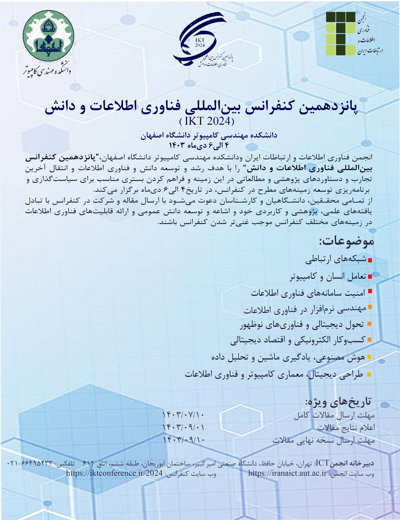0% Complete
Authors :
Keywords :
Abstract :
List of archived papers
Negin Shafinezhad - Hamid Abrishami - Maryam Mahmoodi
Alireza Akhavan safaei - Pegah Saboori - Reza Ramezani - Mohammadali Nematbakhsh
Hoda Harati - Farzad Haghighi-Rad - Reza Yousefi Zenouz
Fatemeh Rabbani - Dr Behrooz Masoumi - Dr Mohammad Reza Keyvanpour
زهرا کلوندی - دکتر مهدی سخائی نیا زهرا کلوندی - مهدی سخائی نیا -
فریبا اسلامی امیرآبادی - کمال میرزایی بدرآبادی
سیدرضا قادریان خیرآبادی سیدرضا قادریان خیرآبادی -
Shakiba Rajabi - Komeil Moghaddasi
سحر فقیهی راد - دکتر سیده نفیسه آل محمد سحر فقیهی راد - سیده نفیسه آل محمد -





